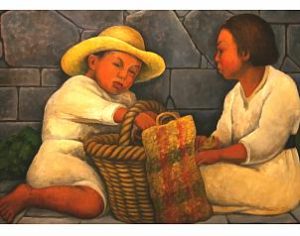(An insight on new environments introduced by arts’education)
“The whole world is facing a dilemma. The issue for education globally is how to reconcile what we know ought to be done and will fight to achieve in the future with what is feasible now” (Seymour Papert)
Since the new technologies of information and communication have burst into our current lives labor changes and labor skilled demands had run parallel to each other. The old-assembly-line model is being replaced by new forms of knowledge technology which are fostering new labor environments for the production of goods and putting into reverse the current economical system.
Consequently education is questioned in all its ways of conveying knowledge and training. So it goes mainly to question school as a means of learning. We still think that to learn or to be educated within a society and within a school system means that a learner has to be schooled since an early age till he’s 16 years old. But this is shown untrue. Due currently to accelerating changes we expect institutions charged with preparing the young for them. But institutions evolve at a lower rate and we are seeing an increasing gap between school and society. This gap is responsible for the deterioration of performance in schools and educational systems.
The students feel that the pace of school and the mood of school culture isn’t in tune with the society in which they live. It has become harder and harder to get them to buy into the idea that school is satisfying their needs, that school is a bridge to 21st century as political leaders reiterate repeatedly.
The tendency today is for people to interpret the failure of school, the problems in schools, to too much change. And so they push the school backwards. Most of our political leaders and members of our educational establishment miss this point. They think that reverting all the system to the state and implementing it the situation will work successfully. But by doing that they will aggravate the problem. They are in a state of reverse of negative feedback that will lead to aggravate the problem till the system breaks down. That’s what is happening now.
We should know that a wrong feedback only brings education backwards. Then why do we have to waste our precious resources in patching a system that is going to become obsolete. Worse yet it leads to training next generation of teachers to obstruct progress.
What can we do to remedy the current situation whereas education is trapped and an engaged participation is urged?
We need to fill in the gap. Education is called for new ideas, innovative methodologies and a new understanding in order to create new conditions to work and learn. But to learn is no longer to be taught. The use of new technologies biased towards environments where team-working, mutual aid and share knowledge are at the basis of a new education process . Therefore to achieve this purpose there’s a need to draw education out of the walls of schools and bring it to the arena of learning to live and focus on the processes of learning. A non -formal teaching-learning.
Some people of the education community have pointed at lack of creativity and innovation as being the cause of failure and dropout in school. There’s more need than knowledge and skills to be productive and innovative participants in today’s knowledge society. Creativity and innovation are recognized of crucial importance in today’s life education in order to develop new skills and competence and empower the learner to learn.
The study of arts have demonstrated beneficial to the development of learners potentialities. Involvement in arts is associated to gains in math, reading, cognitive ability, critical thinking and verbal skill. Learning through the arts promotes the idea that there’s more than one solution to a problem, or more than one answer to a question. Art is beneficial for the artist as an outlet for work. Education as a process of communication of experiences convey a love for learning. Learners who study the arts seriously are taught to see better, to envision, to persist, to be playful and learn from mistakes, to make critical judgments . Art can promote experiences of empathy and tolerance.
So creativity involved in the learning process can make students to flourish when creativity drives learning. “Art in education turn” is targeted to be a project based upon two main principles: creativity and knowledge Tthe project is to deepen into dematerialized mediums such as talks lectures , discussions, knowledge exchanges, reading groups, schools and how they act as an artwork. Likewise aesthetically relationships, creative disruption through transforming spaces of the institution in order to disrupt the ritual of the everyday.
Learning through the arts promotes the idea that there’s more than one solution to a problem or more than one answer to a question and art can biased education to focus on creativity and innovation high lightening the process of learning as the creativity process in tune with art’s process of learning may lead to any of many kinds of products verbal and non verbal, concrete and abstract.

